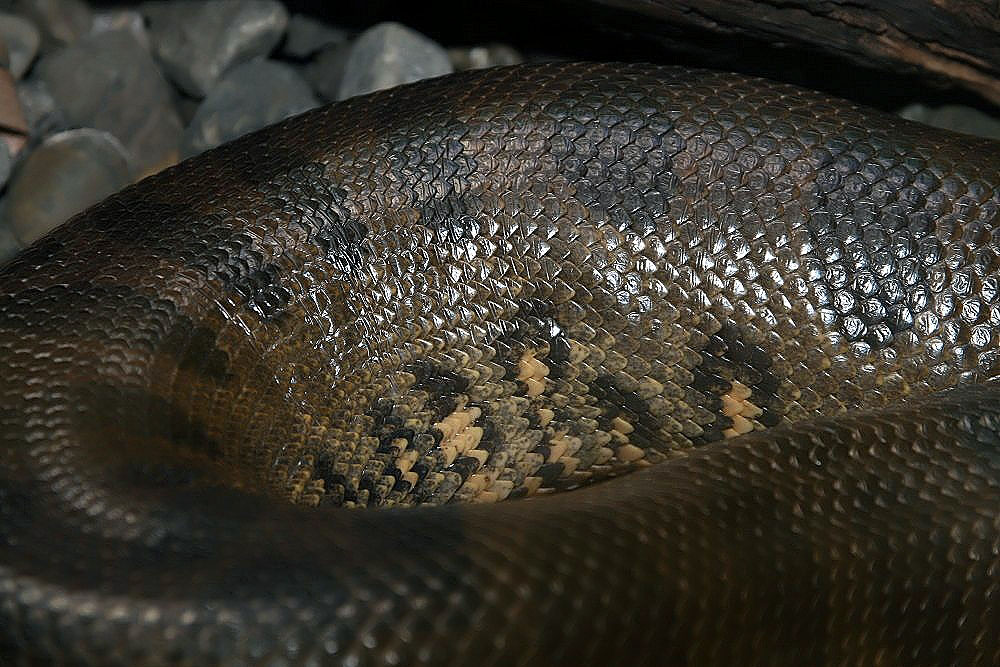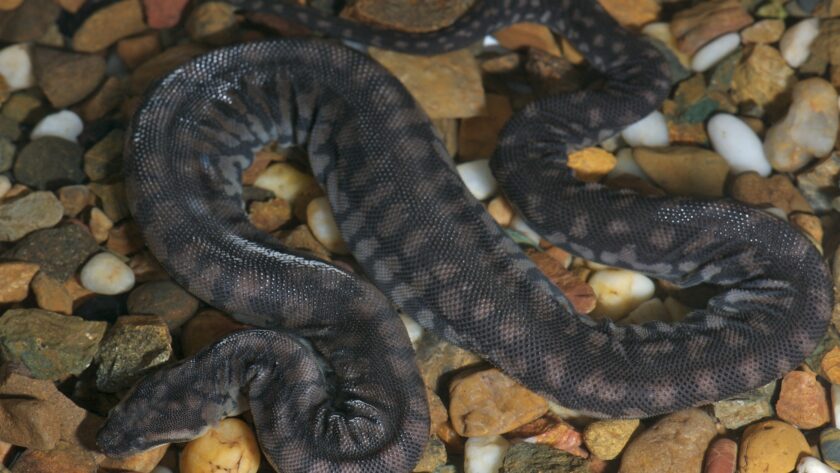Are you an experienced snake keeper looking to add a unique aquatic species to your collection? Do you want to take on the challenge of caring for a non-venomous snake that can grow up to eight feet in length? Look no further than the elephant trunk snake.
This fascinating species is native to Asia and Australia and requires a specialized setup to thrive. In this article, we’ll share tips and tricks for mastering elephant trunk snake care, including advice on tank setup, feeding, and common health concerns.
As a dedicated snake keeper, you understand the importance of providing the best possible care for your pets. With its specialized needs, the elephant trunk snake requires a unique approach to husbandry. But don’t let that intimidate you! With the right setup and knowledge, you can provide a happy and healthy home for your elephant trunk snake.
From tank size and water quality to feeding habits and potential health issues, we’ll cover everything you need to know to become a master at elephant trunk snake care.
So, let’s dive in and explore the fascinating world of this amazing aquatic snake species!
Table of Contents
Key Takeaways
- Elephant trunk snakes are a non-venomous aquatic species found in Asia and Australia, primarily in coastal areas.
- They require a specific environment, including brackish water, a low-level UV lamp, and a temperature of 84 to 86°F.
- Elephant trunk snakes are difficult to care for and require experienced keepers due to their prone to stress and health issues, especially white spot fungus.
- Their diet consists of live fish and occasionally live amphibians, and they are nocturnal hunters that capture their prey through an ambush.
Elephant Trunk Snake Care: Species Description

You already know that the elephant trunk snake is a non-venomous aquatic species found in Asia and Australia, but did you know that they are primarily found in coastal areas and can grow up to eight feet? These snakes have a unique physical characteristic- their long and flexible snouts that resemble elephant trunks. This snout is used to detect prey in murky waters and to hold onto their prey while they wrap their bodies around it.
Habitat preferences are crucial for the survival of elephant trunk snakes. They thrive in brackish water with a pH balance of 5 to 7.0 and require a low-level UV lamp and a temperature of between 84 to 86°F. An aquarium with hiding spots, foliage, and leaf litter is necessary, and adult elephant trunk snakes require a 150-gallon aquarium or larger.
They also require heavy decorations that are tied or have a weighted base, and live plants must be secured or tied. These snakes do best in shallow, slow-moving water, and handling can cause stress or injury.
Elephant Trunk Snake Care Guidelines
Maintaining appropriate water conditions and providing a basking area in the hotter zone are crucial aspects of caring for the elephant trunk snake. As an aquatic species, they require a brackish water environment with a pH balance of 5 to 7.0.
Setting up a tank for elephant trunk snakes involves providing hiding spots, foliage, and leaf litter. Adult elephant trunk snakes require a 150-gallon aquarium or larger with heavy decorations that are tied or have a weighted base. Live plants must be secured or tied, and the tank should have shallow, slow-moving water.
In addition to tank setup, water quality is essential for the health of elephant trunk snakes. They are prone to stress and health issues, especially white spot fungus. Performing a partial water change (15% to 25%) weekly helps maintain cleanliness. Stable and appropriate water conditions are the most reliable long-term treatment for white spot fungus.
Stress can also cause white spot fungus, so it’s crucial to keep the elephant trunk snake’s environment as stress-free as possible. Providing a basking area in the hotter zone with a low-level UV lamp helps regulate the water temperature and promotes the snake’s overall health.
Feeding and Health Tips
Feeding the elephant trunk snake is a delicate process that requires attention to detail and a bit of patience. These picky eaters can be reluctant to eat around humans, so it’s crucial to create a calm and quiet environment for them. This means turning off any loud noises or bright lights and avoiding any sudden movements that might startle the snake.
When it comes to feeding, it’s essential to provide your elephant trunk snake with nutritious food options. Some suitable options include live fish such as tilapia, guppies, mollies, and rosy red minnows. Large bullfrog tadpoles and convict cichlids are also good choices. It’s important to note that feeder fish should be smaller than the snake’s body width to prevent choking.
By providing a variety of nutritious food options and minimizing stressful feeding situations, you can help keep your elephant trunk snake healthy and happy.
Frequently Asked Questions
Are there any specific water parameters that need to be maintained for elephant trunk snakes?
To maintain ideal living conditions for elephant trunk snakes, water parameters must be carefully monitored. Maintain a pH balance of 5 to 7.0 and perform weekly partial water changes. Keep the water shallow, slow-moving, and clean for optimal maintenance.
How often do elephant trunk snakes shed their skin and what is the best way to assist them during this process?
You may notice your elephant trunk snake shedding its skin every 1-2 months. Shedding frequency depends on age, growth rate, and health. Make sure to maintain proper humidity and provide hiding spots to help with skin health during the shedding process.
Can elephant trunk snakes be kept with other aquatic species in the same aquarium?
Compatibility concerns should be considered when choosing tank mates for elephant trunk snakes. They are nocturnal hunters and require live fish and amphibians in their diet. Feeder fish should be smaller than the snake’s body width to avoid choking.
What are some common behavioral traits of elephant trunk snakes and how can owners ensure their snake is comfortable and happy in its environment?
To ensure your elephant trunk snake is happy and comfortable in its aquarium, provide hiding spots, foliage, and leaf litter. Respect their nocturnal nature, and give live fish as food to accommodate their ambush feeding habits. Keep their water clean and pH balanced to match their habitat preferences.
Are there any specific training or enrichment activities that can be done with elephant trunk snakes to promote their physical and mental well-being?
Enrichment activities and mental stimulation are important for elephant trunk snakes. Provide hiding spots, foliage, and leaf litter to encourage natural behaviors. Avoid handling and ensure stable water conditions to reduce stress and promote overall well-being.
Conclusion
Congratulations, you’re now equipped with the knowledge to master elephant trunk snake care!
Remember, this unique species requires a specialized setup to thrive, so be sure to provide a large tank with plenty of hiding places and a water feature for swimming.
Keep the temperature and humidity levels consistent, and feed your snake a varied diet of fish and small rodents.
Did you know that elephant trunk snakes have the ability to breathe through their skin? This adaptation allows them to stay submerged for extended periods of time and is just one of the many fascinating traits of this amazing species.
By following the care guidelines we’ve outlined, you’ll be able to provide a healthy and happy home for your elephant trunk snake for years to come.
So go ahead, add this aquatic beauty to your collection and enjoy the wonder of this amazing creature!

